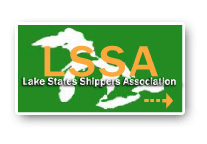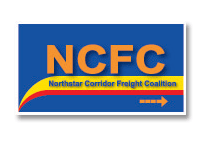CCFC, Our Working Agenda for 2006
Wed, 01/04/2006A draft of the CCFC 2006 Agenda Items 1 through 10 (“CCFC2006/1-10”) was presented to DOT representatives of Minnesota, Wisconsin, Michigan, Iowa, Illinois and Ohio, at the opening workshop of Phase II of the Upper Midwest Freight Corridor Study (“UMFCS”), at Milwaukee 11/15/2005. This was the first of a series of Phase II workshops which are to be held with the objective of arriving at an agenda for a Regional Freight Strategy. CCFC’s draft was presented as “a private sector perspective” and served as a counterpoint for the day’s discussion of a draft agenda and series of nine “white papers” prepared since August 2005 by the UMFCS team. Full report.
Items 1 through 6 of the CCFC Agenda (“CCFC2006/1-6”) are the substantive elements of a specific, strategic agenda for the Central Corridors Freight Committee for 2006. Items 7 through 9 are nuts and bolts elements of the agenda, related particularly to what we intend to accomplish through CCFC’s participation in UMFCS Phase II, with our public sector colleagues representing the seven states of the Central Corridors Region.
Item 10 is a simple, opening statement of what may be a key component of CCFC’s agenda for 2007-2008, should we succeed in advancing the CCFC Agenda in 2006:
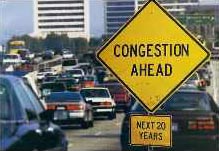
1. Rail Coal and Energy Competitiveness: Press for final approval of the DM&E PRB Project, including removal of physical and paper obstacles to competitive routes into WI, MI, IL, IN, OH, lake and river port gateways. (Full description)
2. Regional Intermodal Freight: Promote local access to a region-wide system for intra-regional intermodal freight operations and connections by identifying and quantifying economic and other conditions necessary for building-out to a mature system over time. (Full description)
3. Ports, Waterways, Dual Uses: Promote looking at lake and river waterways, ports and navigational infrastructure, both for expanded use for traditional bulk commodities but, also, for renewed use for non-bulk commodities and trade and, at port facilities and connectors, for dual use truck-rail transfer and distribution operations, as part of a region-wide system for intermodal freight operations. (Full description)
4. Central Corridor Bottlenecks: “CREATE” an enumeration of specific projects for regional cooperation and coordination to identify, quantify and systematically eliminate bottlenecks which impede mobility on the Central Corridors. (Full description)
5. Performance Based Regulation, Promoting Overall Safety: Explore and promote pilot projects, the scope of which require regional cooperation, leading to potential exemption from prescriptive regulations, based on reliable, audit-friendly data and metrics which demonstrate simultaneous improvement in private sector productivity, effective utilization of infrastructure capacity and overall safety. (Full description)
6. Extend SCM and Third-Party Logistics Solutions: Promote public-private sector collaboration across jurisdictions to facilitate extension of SCM and third-party logistics solutions to freight operations not yet touched or remaining under-served by private sector logistics providers. (Full description)
7. Regional Competitiveness: Promote a clear differentiation among those economic development and mobility matters on which states and localities may compete and those on which Regional cooperation and coordination are essential for Regional competitiveness. (Full description)
8. Corridors of Regional and National Significance: Promote “corridor thinking” among CVO professionals, recognition and designation of the “Central Corridors” by FHWA and Congressional delegations of the Region, and pre-positioning identified system-priorities for 2009 and beyond. (Full description)
9. A Regional Mobility Agenda and Continuing Forum: Actively present private sector perspectives for consideration in Phase II of the Upper Midwest Freight Corridor Study and emerge with a viable, continuing forum for Regional cooperation/coordination. (Full description)
10. Federal Funding 2009, NexTEA: Mobilize regional leverage to prioritize projects moving toward a new, integrated “Interstate and Defense Transportation System”. (Full description)
Central Corridors Freight Committee
Our Working Agenda for 2006
1. Rail Coal and Energy Competitiveness: Press for final STB approval, funding and implementation of the DM&E PRB Project, including removal of physical and paper obstacles to competitive routes into WI, MI, IL, IN, OH, lake and river port gateways.
Reliability and Security. Powder River Basin (“PRB”) coal will be a crucial component of the Region’s and the Nation’s energy resources through the middle of this century, at a minimum. Derailments in May, 2005, led to an extensive maintenance project on the BNSF-UP shared track out of the southern PRB. Both railroads rationed coal service both to utilities and other customers. A storm on 10/1/2005 disrupted UP traffic between Kansas City and St. Louis, including PRB coal, another demonstration of the vulnerability of the PRB coal supply chain. The proposed DM&E route will provide not only a third carrier but, also, a geographically distinct route, reducing the risk of disruption from a broad range of potential disasters.

Competition and Capacity. Increasing demand for PRB coal assures that adding the DM&E route will not result in destructive competition. It may, however, de-rail those railroaders who, despite public comments recognizing the need to add rail capacity, would rather rely on constrained capacity and other monopolistic pricing practices to gain revenue adequacy. In other words, we believe the DM&E project may serve as a catalyst to change the perspective of railroad executives. Its construction may help force the key Class Is to recognize that the real value of their franchises – and the competitiveness and economic health of the territories they serve - will be earned from investment in new capacity to serve a broad range of commodities and from intensively competing for short and intermediate, as well as, long haul market share.
Competition, Removing the Barriers, Physical and Paper. Supporting the DM&E project, alone, does not take care of the last-mile issues. That requires removing physical and paper barriers (closed gateways and terminal access) to getting competitive coal delivered to the facilities of the consumers. As one commentator notes, DM&E will not have access to BNSF’s and UP’s captive utilities. These account for some 40% of BNSF’s and UP’s coal revenues. Nor are the connecting lines likely to permit DM&E satisfactory economics of interchange to points on their lines. This accounts for another 40% of BNSF’s and UP’s PRB coal revenues. Thus, the analysis concludes that only 20% of PRB coal traffic is competitive. DM&E, for its part, will contend that increasing demand for PRB coal will permit it to achieve the revenues needed to repay the $2.5 billion construction loan it seeks from the Federal Railroad Administration. What we suggest in the succeeding paragraphs is that there are other incentives that may be brought to bear to promote removal of such barriers to greater competition in the delivery of PRB coal.
Competition, Building Capacity May Trump the Regulatory, Public Policy Debate. Simply imposing open gateways and access by legislation or administrative regulations seems as politically unlikely as at anytime in the past 25 years. Market demand for additional capacity on both rail and highway, particularly demand for rail intermodal, however, may provide a different way to achieve the benefits of competition. There are, on the horizon, unprecedented opportunities to negotiate or provide trade-offs to relieve capacity constraints. The trade-offs will involve conditioning public-private investments in new capacity on commitments to open gateways and/or access to permit more effective use of existing capacity. New capacity will be developed on competing routes.
By these means, we will shift the focal point of the regulatory and public policy debate. It will move beyond “rate reasonableness” for captive shippers into the realm of satisfying the requirements of “public convenience and necessity” to assure: (a) adequate capacity to meet market demands for transportation service; and (b) overall safety and security on highway and on rail, for people and freight.
Competition, Consolidation Versus Competition. This context also provides an opportunity to put to rest the perennial pro-merger argument that consolidation and single-line is the only route to greater efficiency and better service. Interchange and access may become a key to squeezing additional capacity from the existing infrastructure and/or to more effectively and expeditiously build new capacity where it is needed without surrendering to a future dominated by one or two mega-Class I railroads. Broad implementation of available and proven supply chain technologies, as well as innovations already in testing or on the horizon, mean that quality of service and efficiency need not be inextricably tied to consolidation and single-line. Increasing demand may mean that critical lane and line densities can be achieved in areas now served by lighter density lines owned by either Class Is or shortlines. This existing capacity may be rehabilitated, enhanced and connected to provide needed capacity more effectively than building all new capacity along lines already congested and capacity-constrained. Geographically distinct routes have the added advantage of potentially minimizing impacts of natural and other disasters.
In other words, this is not just about the DM&E PRB coal project. There will be other projects, less dramatic, perhaps, that provide similar opportunities. (Return to top)
2. Regional Intermodal Freight: Promote local access to a region-wide system for intra-regional intermodal freight operations and connections by identifying and quantifying economic and other conditions necessary for building-out to a mature system over time.

Vision Counts. To some, this priority may seem far-fetched. “Building out to a mature system” may take thirty or more years. The I-System envisioned in the early 1950s still had many key segments yet to be built twenty years later. The I-System, however, contributed to local and regional economies, to the national economy and to highway safety, from the beginning, in no small part, because leaders envisioned a “system”. A key to establishing a local access, region-wide, intermodal system may simply be to define and articulate: (a) the standard of service and rates necessary to competitively attract sufficient highway freight (long, medium and short haul) to achieve sustainable lane and line density; and (b) the scope, nature and potential sources of infrastructure investment. A common understanding may encourage public, private and public-private investments in building elements of the system, which will provide both immediate returns and, also, increasingly valuable returns as the system matures.
Frustration with the Current Dialog, Level of Understanding. How useful is it for the public planner, working with a 30 or more year horizon, to be told by the private sector that truck/rail intermodal is only competitive for 500-700 mile hauls? That observation may be a reasonable snapshot of conditions before diesel zoomed past $2 per gallon and highway congestion become a recognized factor in freight mobility. The 500-700 mile haul minimum is just as dated as the statements, in study after study, that rail is most and best used for transporting bulk commodities, only. Such statements completely miss the implications of the fact that intermodal already serves a veritable shopping cart of high value, consumer goods. Intermodal has surpassed coal as the top revenue producer for the Class I railroads. Top logistics providers describe themselves as “mode agnostic”. Such statements ignore the implications of the long term investment of trucking in truck/rail intermodal (e.g., J.B. Hunt, UPS, Schneider to name only a few) and Schneider’s introduction of a universal 53-foot truck/rail highway and intermodal container. Trucking’s demand for rail intermodal, including intra-regional, already far exceeds capacity. The future is not only foreshadowed; it’s already here.
The Challenge. We intend to invite and, if necessary challenge, all of the stakeholders to achieve a common understanding: What service quality and options are need? What lane and line density? What investment in truck/rail intermodal facilities and connectors, rail lines, grade separations, yards and other facilities? Ultimately, what share of the freight must a region-wide, truck/rail intermodal attract in order to reduce and optimize truck freight highway operations consistent with the level of highway infrastructure the region is able to sustain?
What can truck/rail intermodal contribute to freight mobility in both the region and across the nation? Beyond a vision, what is needed is identification, quantification and common understanding of the necessary elements of such a local access, region-wide intermodal system. We see this as a valuable investment for the efforts and resources of the Upper Midwest Freight Corridor Study, Midwest University Regional Transportation Center and the Wisconsin Transportation Center Freight Research Institute. (Return to top)
3. Ports, Waterways, Dual Uses: Promote looking at lake and river waterways, ports and navigational infrastructure, both for expanded use for traditional bulk commodities but, also, for renewed use for non-bulk commodities and trade and, at port facilities and connectors, for dual use truck/rail transfer and distribution operations, as part of a region-wide system for intermodal freight operations.

This priority is directly linked to CCFC2006/1 and 2, above. Facilities for a larger combined volume of water and truck/rail containers need not be located directly at the port. If space at the port is constrained, the combined volume may sustain a local inland location, where intermodal connectors may be built to serve truck/rail and water/rail and water/truck transfers. Dual use provides opportunities for increased lane and line densities, as well as potentially enhancing utilization of yard, transfer, storage and connector assets. Dual use also provides opportunities and alternatives for dealing with NYMBY reactions and for selecting locations and operating models which may have more favorable environmental and other impacts.
Distant rumblings about the reappearance of international container freight on the Great Lakes should not be ignored. The advent of universal, 53-foot, domestic intermodal containers may have implications for domestic short-sea shipping of non-bulk commodities on the Great Lakes and riverways or for surge capacity for certain seasonal bulk commodities. Within the last 35 years, cross-lake rail car ferries were, for much of the paper industry, the fastest and most consistent service routes to upper midwestern and eastern markets. Rail service via Chicago has not gotten that much better. Moving intermodal truck/rail containers via cross-lake routes is not an unimaginable option, particularly in the context of building a local access, region-wide intermodal system which includes dual use of port facilities and connectors. (Return to top)
4. Central Corridor Bottlenecks: “CREATE” an enumeration of specific projects for regional cooperation and coordination to identify and quantify and, thence, systematically eliminate bottlenecks which impede mobility along the Central Corridors.
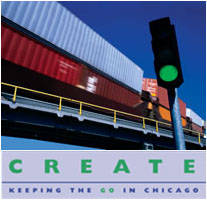
The CREATE program had its roots in a brief snowstorm in the winter of 1998 that snarled the Chicago rail terminal for over 90 days. The experience led the principal rail carriers to create the Chicago Coordination Office. This private sector cooperative effort, which included development of a sophisticated computer model for testing potential changes to Chicago area rail terminal operations, over several years, resulted in projects and other changes that reduced average through terminal time per car from over 45 hours to approximately 30 hours. The effort also led to cooperative planning activity with local and state officials that, in late 2003, produced announcement of the CREATE project.
The Chicago Region Environmental and Transportation Efficiency (“CREATE”) Program is a proposed $1.5 billion project to expedite train movements and reduce road and rail congestion along five rail corridors traversing the Chicago region. Among 60 component projects to be constructed over 6 to 10 years, the Program is to include grade separations for 6 rail-rail crossings and 25 highway-rail crossings. Annually, the Chicago rail terminal handles freight valued at over $350 billion, 60% of which is high value intermodal (conventional and double stack) and which represents some 60% of the Nation’s intermodal rail freight. Traffic handled on the CREATE rail corridors accounts for approximately $10 billion, or 29% of annual revenues, earned by U.S. Class I railroads.
The Safe, Accountable, Flexible, Efficient Transportation Equity Act: A Legacy for Users (“SAFETEA-LU”), nonetheless, earmarked only $100 million of the $400 million sought for the CREATE Program. This effectively assures that the component projects of CREATE will move forward on a slow timetable and may be cut back. CREATE was not alone in receiving short shrift. The Alemeda Corridor Extension project, lines carrying 19% of the nation’s waterborne international trade, was similarly “lightly funded” under SAFETEA-LU. Many other earmarked projects (over $23 billion in total), which will make little or no contribution to the nation’s transportation system, received more dollars and higher percentages of their total cost. The process of earmarking under SAFETEA-LU, with little or no regard for investment in infrastructure critical to the system as a whole, has brought on a chorus of demands for a national strategy for transportation infrastructure funding.
Might the CREATE Program have received greater attention, even in the SAFETEA-LU earmarking process, had the seven states of the Upper Midwest or Central Corridors region clearly identified it as a priority? We think the answer is, clearly, yes.
Thus, the objective of CCFC2006/4, the core recommendation of the Upper Midwest Freight Corridor Study and the agenda for Phase II of UMFCS, is to lay a foundation for these seven states to jointly, from the grassroots, identify and prioritize those infrastructure projects which will eliminate bottlenecks affecting the transportation mobility system, regionally and, in some cases, nationally. (Return to top)
5. Performance Based Regulation, Promoting Overall Safety: Explore and promote pilot projects, the scope of which require regional cooperation, leading to potential exemption from prescriptive regulations, based on reliable, audit-friendly data and metrics which demonstrate simultaneous improvement in: (a) private sector productivity; (b) effective utilization of public infrastructure capacity; and (c) overall safety.
Federal Motor Carrier Safety Administration (“FMCSA”), notwithstanding its difficulties establishing new hours-of-service (“HOS”) and driver training rules, has reiterated its authority and receptivity to consideration of pilot projects and exemptions from its regulations, including HOS. Exemptions might involve HOS or configuration, or, with some additional complexity, size/weight. Specific pilot projects leading to exemptions, might include: (a) extension of turnpike based LCV operations; and (b) exemption from selected provisions of the HOS regulations, under specified circumstances and operating disciplines, which reduce the miles of operation necessary to move the same freight and provide a demonstrably better than previous safety performance.
Almost any such pilot project, to validly test and assess the efficacy and value of the exemption, would require a geographic scope beyond a single state and probably require a regional scope. Support or, minimally, the cooperation of the states of the Central Corridors region will assure a better reception for such projects at FMCSA and may be the key to overcoming irrational or proprietary resistance. These demonstration projects will, in fact, lead to real safety, security and productivity gains by replacing prescriptive rules with performance-based regulation.
(Return to top)
6. Extend SCM and Third-Party Logistics Solutions: Promote public-private sector collaboration across jurisdictions to facilitate extension of SCM and third-party logistics solutions to freight operations not yet touched or remaining under-served by private sector logistics providers.
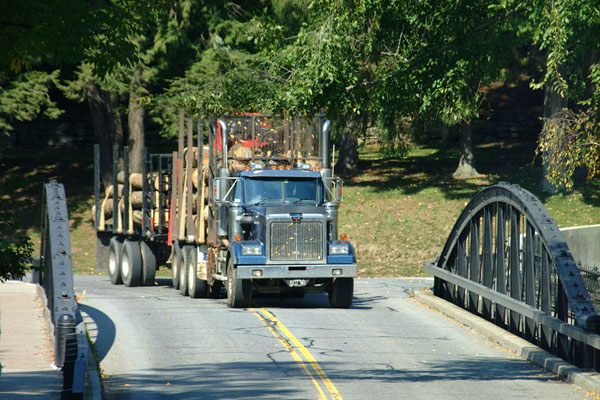
Although private sector logistic providers have a remarkable record of innovation, demonstrated productivity gains and market penetration, there are many areas in which cultural, regulatory and/or jurisdictional obstacles have blocked progress.
A good example is the movement of wood fiber from producers to the consuming mills. CCFC’s preliminary activities have already helped initiate the Lake States Shippers Association (“LSSA”). LSSA’s objective is to bring SCM and third-party logistics to the problem of reducing empty truck and rail miles and other inefficiencies incurred in moving pulpwood from producers and consolidation yards to consuming mills in Minnesota, Wisconsin, Upper Michigan and northern Ontario. There is widespread recognition that these potential cost savings may be crucial to retaining forest products manufacturing in this region. Another example is the potential for removing obstacles to independent, owner-operated or contractor-operated truck/rail intermodal transfer facilities in the context of projects described in CCFC2006/2 and 3, above.
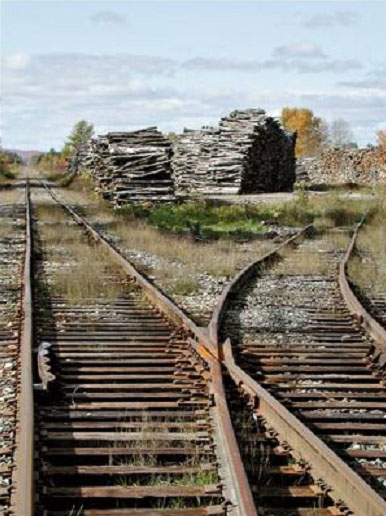
Regional cooperation is a critical ingredient for removing cultural, inertial, regulatory and/or jurisdictional obstacles that would otherwise impede or preclude such projects. (Return to top)
7. Regional Competitiveness: Promote a clear differentiation among those economic development and mobility matters on which states and localities may compete and those on which regional cooperation and coordination are essential for the national and global competitiveness of the region.
It is not so difficult to make a case for those matters on which regional cooperation and coordination are essential and to identify solutions to problems that are only available through such regional cooperation or coordination. Reaching a consensus among public officials as to those matters is quite another thing. This is a subject as prickly as federalism, states’ rights or local home rule.
How hard can it be to ask the Wisconsin or Iowa Congressional delegation or DOT officials to support full funding of a project such as CREATE, when that may mean short funding some other projects in their own states? Not so easy to do. CCFC, collaborating with our public sector counterpart in UMFCS Phase II, will attempt to lay a better foundation for making such cooperation possible. (Return to top)
8. Corridors of Regional and National Significance: Promote “corridor thinking” among CVO professionals, recognition and designation of the “Central Corridors” by FHWA and Congressional delegations of the Region, and pre-positioning identified system-priorities for 2009 and beyond.
This is similar to CCFC2006/7, above. “Corridor thinking” means the “commercial vehicle operations professional” (e.g., middle and upper managers in state DOTs, a/k/a “CVOs”) recognize that the corridor is a multi-jurisdictional thing. Problems within his/her jurisdiction may originate, or be substantially influenced by events or conditions, beyond the CVO’s own jurisdiction, for which effective solutions may be available only through coordinated efforts.
Administrative designation as a corridor of regional or national significance can, in some cases, provide access to research, planning and seed money not otherwise available to an individual state. Creating a public and political awareness or recognition of such corridors is a step along the way toward regional agreement on priorities for the corridor and, potentially, may provide a better profile, or pre-positioning, for gaining earmarked funding in the next highway reauthorization bill in 2009. Because the process of earmarked funding, which reached something of a zenith in SAFETEA-LU, is under attack from many quarters, this “pre-positioning” may prove very much more important next time around than it has been for recognized corridor projects in the past. The Midwest lags behind efforts in other regions (east, west and south) to create high profiles for priority corridor projects. (Return to top)
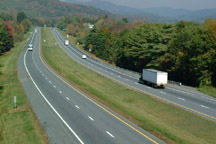
9. A Regional Mobility Agenda and Continuing Forum: Actively present private sector perspectives for consideration in Phase II of the Upper Midwest Freight Corridor Study and emerge with a viable, continuing forum for Regional cooperation and coordination.
CCFC will be represented at each of the UMFCS workshops in 2006, will critique the various “white papers” and drafts of the Phase II report, and will otherwise attempt to assist the UMFCS team in obtaining useful and valid private sector input. The latter will involve ongoing briefings of CCFC participants and private sector organizations representing regional stakeholders, who have, or should have, an interest in CCFC’s agenda and the outcome of UMFCS Phase II. (Return to top)
10. Federal Funding 2009, NexTEA: Mobilize regional leverage to prioritize projects moving toward an integrated “Interstate and Defense Transportation System”.
Enough said. This rounds out the agenda at an even ten. This is not, however, an agenda dedicated to gaining advantage for our region over other regions. The primary consideration is to promote a comprehensive “systems approach” which, we believe, will inherently favor good decisions for freight mobility, productivity, safety, security and competitiveness. (Return to top)

